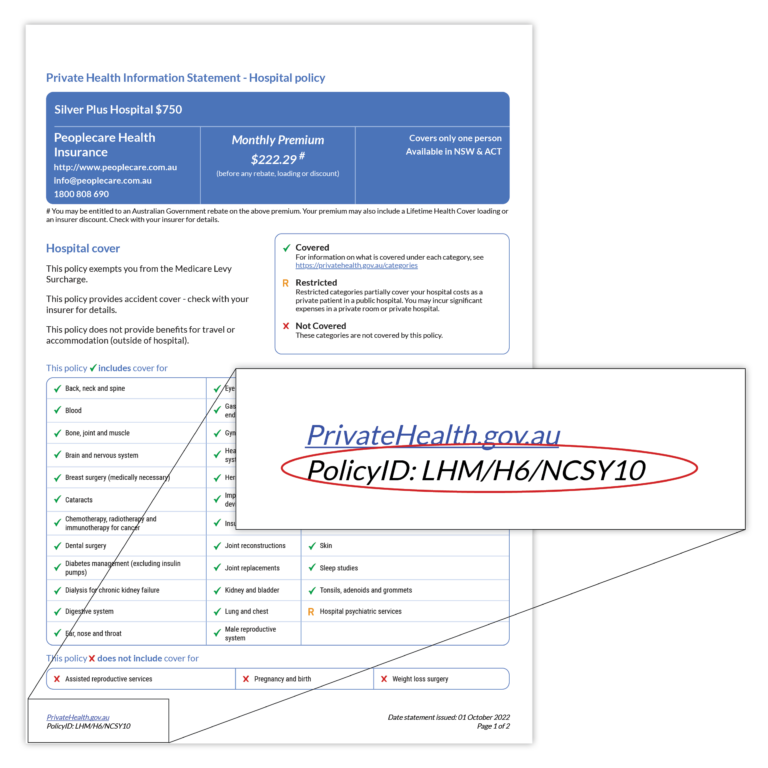 Allianz Care Australia
Allianz Care Australia
Whether you want to change health insurance policies due to a price rise, a change in your circumstances or simply because you want a better deal, you’re in the right place. The world of health insurance can seem confusing, but at healthslips.com.au we’ve made it really simple for you to compare health insurance in Australia and find the best price for you.
Here are the four steps to take when you’re comparing your existing health insurance with other policies, to help you find the policy that offers you the best value.

1. Know your tier and cover
In April 2020, the Australian government introduced health insurance changes that have made it easier to understand what you’re getting from your policy. Hospital Cover policies are now grouped into four tiers: Basic, Bronze, Silver and Gold. Insurers can also include some additional features to create ‘in between’ tier levels: Basic+, Bronze+ and Silver+.
Healthcare treatments and services are now grouped into 38 clinical categories so you can easily find the types of healthcare you want to be covered for, and make sure those procedures are included in your policy.
So to compare your policy with other policies, you need to know:
- Is your policy for Hospital, Extras or Combined Hospital and Extras Cover?
- What tier is your policy: Basic, Bronze, Silver or Gold?
- Does it cover all the clinical categories you need, now and in the near future?
2. Find your Policy ID
This sounds complicated, but we promise it’s not.
Simply find your most recent Private Health Information Statement (PHIS) – insurers send these out every year. This statement will contain your Policy ID in the bottom corner of one of the pages. This Policy ID is a code that helps identify your policy, and it’ll look similar to this: PND/H12/NELR12.
Write down this Policy ID or take a screenshot on your phone. You’ll need it to compare your policy with other similar policies.

Insider tip: do you have separate policies?
If you’ve got Combined Hospital and Extras Cover, your insurer may treat these as separate policies (even if you pay for them together), which means you’ll have two different policy IDs. You’ll have to compare your Hospital and Extras policies separately with our Calculator.
3. Do government incentives apply to you?
Certain government incentives may make your policy cheaper, like the Age-based Discount which makes insurance more affordable for people under 30. Similarly, the Private Health Insurance Rebate (Government Rebate) means cheaper policies if your income is within certain thresholds (check if you’re eligible here).
On the other hand, the Lifetime Health Cover Loading can make your policy more expensive if you didn’t take out Hospital Cover before the age of 31.
Find out whether you have to pay the Lifetime Health Cover Loading.
When you’re comparing policies, you need to know how these will affect your premium cost. The easiest way to work it out is by using our Rebate, Discount & Loading Calculator, which will calculate the percentage that your premium will be affected.
Calculate your Rebate, Discount & Loading.
4. Compare with ALL available policies
If you want the best deal, you need to compare your policy with every single policy available. But other health insurance comparison websites only show you a limited selection of insurers and policies (usually the ones that they have commercial partnerships with). At healthslips.com.au, we’re one of the only health insurance comparison websites that shows you every policy on the market in Australia. You can be sure you’re not missing out on any good deals, especially since we guarantee you the cheapest price.
You’ll be happy to know our healthslips.com.au Calculator is free to use, and you don’t have to enter any contact details. It’s the easiest way to compare health insurance in Australia.
Try our Comparison Calculator to see if you could save money on health insurance.

Knowledge is power – that’s the guiding principle behind everything Trudie writes, and it’s a philosophy she brings to her work at healthslips.com.au. By breaking down complex information into easy-to-understand blogs and stories, she aims to empower Australians to make the best choices and an informed decision around private health insurance.
Trudie understands firsthand some of the complexity of private health insurance having moved to Australia from New Zealand and having to navigate a vastly different public healthcare system and health insurance structure.
Trudie holds a Bachelor of Communication Studies (journalism major) from the Auckland University of Technology.





